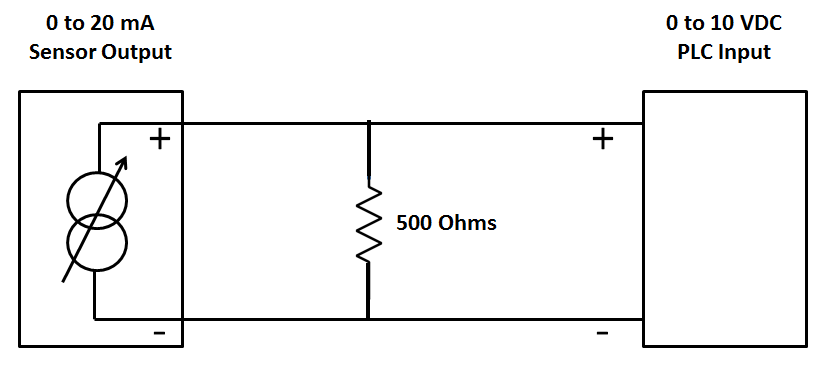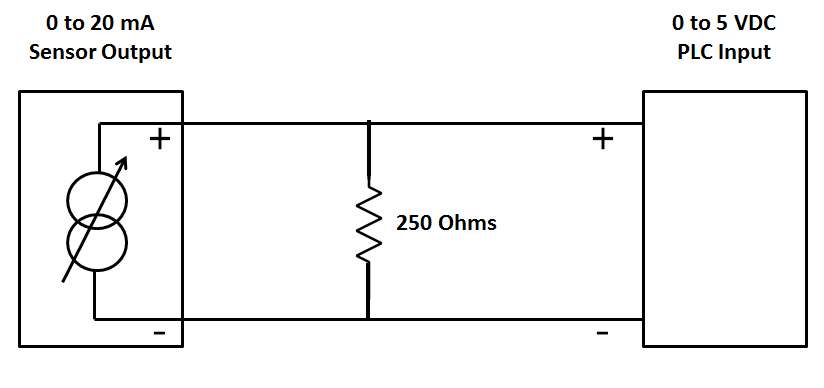How to Convert 0-20 mA to 0-10 VDC Using Resistor ? In this post we discuss with easy examples and diagrams.
It is extremely simple to measure 0-20 mA signal with a device that will measure only Voltage inputs. If Voltage input module available will accept a 0-10 Vdc signal, but may not accept a 0-20ma signal directly.
How to Convert 0-20 mA to 0-10 VDC Using Resistor
Basically, Ohms law is used to calculate a resistor value in order to convert the 0-20ma signal to a voltage.
Example (0-20 mA to 0-10 VDC)
Ohms law states: R = V/I where V is the Voltage, I is the current and R is the resistance
R = 10V/0.020A = 500 Ohms
V = IR = 0500 = 0V
V = IR = 0.020500 = 10V
Example (4-20 mA to 2-10 VDC)
Ohms law states: R = V/I where V is the Voltage, I is the current and R is the resistance
R = 10V/0.020A = 500 Ohms
V = IR = 0.004500 = 2V
V = IR = 0.020500 = 10V
Example (0-20 mA to 0-5 VDC)
Ohms law states: R = V/I where V is the Voltage, I is the current and R is the resistance
R = 5V/0.020A = 250 Ohms
V = IR = 0250 = 0V
V = IR = 0.020250 = 5V
Convert 0-10 VDC to 0-20 mA Using Resistor
Note:-
To avoid damage you must ensure that the external current source has short-circuit protection in all conductor cases.
The external resistor is a source of error because of its dependency on temperature and its inaccuracy.
In order to obtain measuring results that are as precise as possible it is recommended to use resistors with tolerances that are as small as possible.



